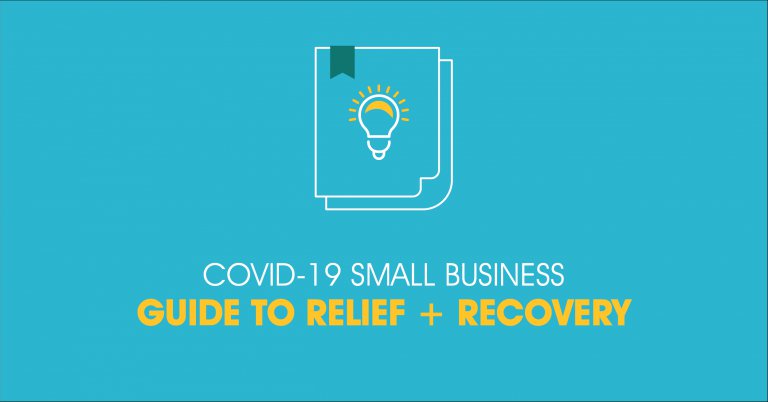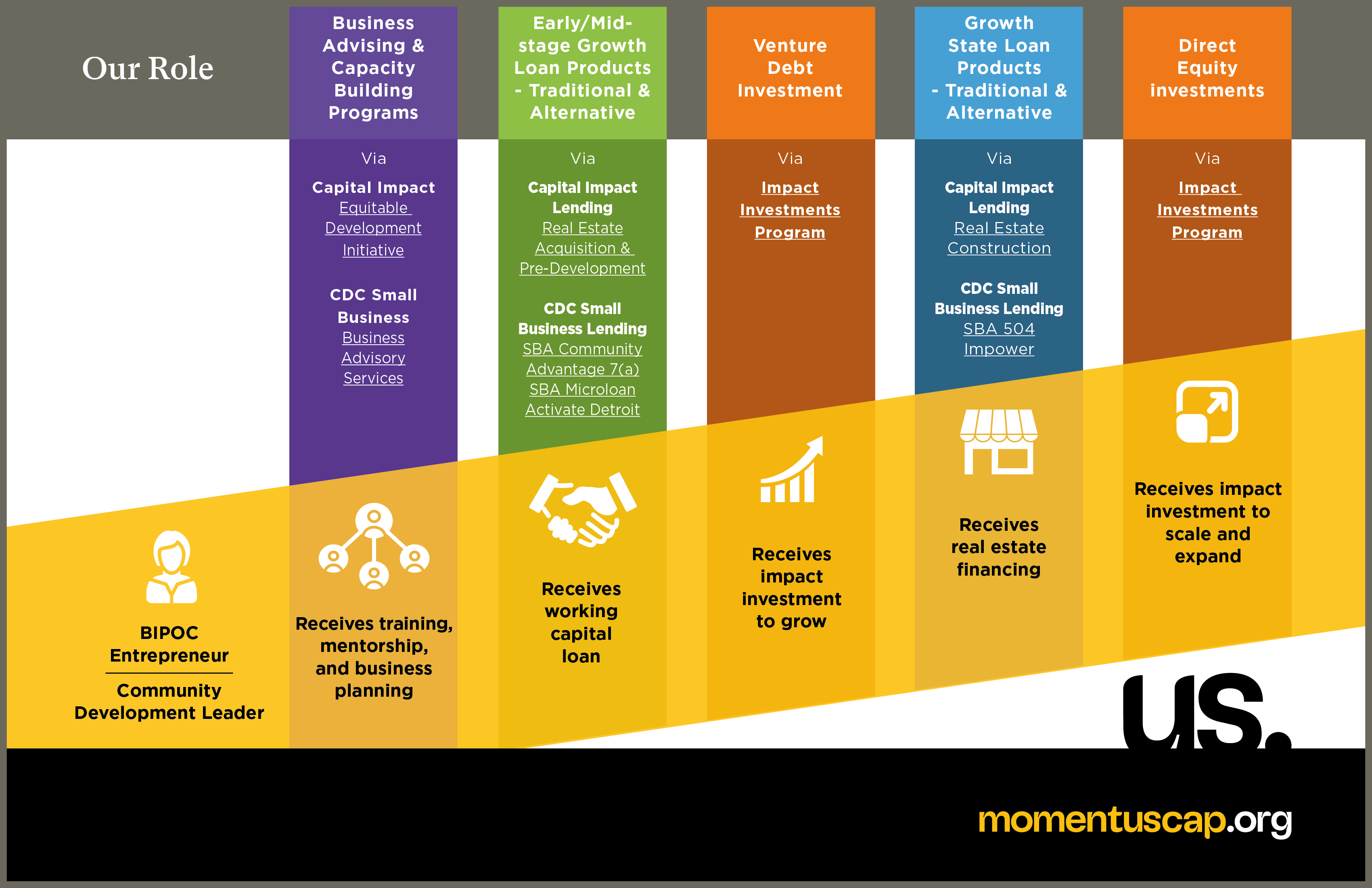
COVID-19 Small Business Guide to Relief and Recovery
Top Resources + Tips for Businesses Impacted by COVID-19 has been moved to this blog. The guide will now reside here.
WE ARE HERE TO HELP. This guide features business management tips and up-to-the-minute resources from CDC Small Business Finance’s business advising team.
HOW TO USE THIS GUIDE:
- Please bookmark this blog and check back often.
- New business tips and relief and recovery resources are added regularly.
- Click any section in the table of contents to go right to that topic.
TABLE OF CONTENTS – click below for quick access to each topic:
- Financial planning
- Communication
- Risk management, including how to avoid COVID-19 loan scams.
- Recovery
- Resources, including SBA emergency grant and loan programs and other government assistance.
COVID-19 Small Business Guide
to Relief and Recovery
Updated: May 18, 2020
FINANCIAL PLANNING
MANAGE YOUR CASH FLOW
- Budget for the upcoming 30 days or 60 days.
- Reduce overhead, all discretionary and non-essential expenses. Modify business hours as needed.
- Negotiate with the landlord for concessions (reduction, slower payment, late fee waiver, etc).
- Franchisees should contact franchisor rep and request “Royalty Holiday” in writing.
- Keep cash disbursements to a minimum.
- Cut back on staffing/payroll if necessary.
WORK WITH YOUR LENDERS
- Complete a cash-flow analysis to determine any funding gaps.
- Communicate with your lenders – contact CDC and/or your bank if you are unable to meet your loan commitments.
- Carefully review your loan documents with your lender and discuss any potential challenges.
MONITOR YOUR KEY INDICATORS
- Assess quick/current ratios, customer orders, equipment utilization, receivables, operating expenses, cash buffer days and working capital.
- Prepare 13- and 26-week cash forecasts and stress test the underlying assumptions.
- Assess eligibility for government and private sector relief.
TRACK REVENUE
- Find alternative sources of revenue.
- Re-allocate resources to areas of growth, online and beyond.
OPTIMIZE EXPENSES
-
- Audit spending and eliminate unnecessary items.
- Determine what segments are working and which are not.
- Convert fixed to variable costs where possible.
- Revisit capital expenditure plans.
- Reduce / curtail lower ROI efforts.
- Ensure investment in critical innovation for the future.
- Flag non-recurring expenses.
TAX UPDATES
- IRS
- News Releases – federal tax deadline extended to July 15.
- The Franchise Tax Board – California: Tax relief for California taxpayers affected by the COVID-19 pandemic.
- Arizona Department of Revenue Learn about the extension
COMMUNICATION
CUSTOMER COMMUNICATION
- It’s critical to communicate openly with your customers about the status of your operations, your ability to provide service/deliver goods/perform work/any delays. Be timely, empathetic and customer-centric. The method can be as simple as placing a sign in the window or posting new hours on social media.
- Include the proactive protective measures you’ve implemented, and how they (as customers) will be assured when they visit your business or you visit them.
- Make sure to reference cleanliness, and the training of your employees.
- Develop new ways of working with your customers (such as Zoom, Jabber, BlueJeans).
- Anticipate and meet new customer needs.
- Utilize your website, email marketing and social media outlets. Offer regular updates. As you serve your customers on social platforms, thank them for their business and note how you appreciate referrals and/or positive social media posts so that others will know your business is up and running.
EMPLOYEE COMMUNICATION AND INVOLVEMENT
- Maintain consistent communication with management and your employees about your immediate plans, for the first 60 days. Set up a distribution list, conference calls, etc.
- Prioritize the health and wellness of co-workers and customers. Train and re-train workers to be hyper-vigilant with cleanliness, health and safety. Make sure they know not to come in if sick or have symptoms – the same goes for owners/management.
- Get co-workers involved – have ‘virtual meeting/conference calls’ to get ideas for sales, efficiency, customer service. Find out who wants to work, has to work and who shouldn’t work due to various concerns (exposure, family, etc). Cross-train employees in case you must shift to a limited crew.
- Strongly encourage co-workers to notify you as soon as possible if they have symptoms, been exposed or can’t work for other reasons (kids, home, transportation, etc.)
- Explain to your staff any temporary measures you put in place.
SUPPLY CHAIN COMMUNICATION
- Communicate with suppliers. Understand any supply chain limitations.
- Ensure you have sufficient inventory and find alternate suppliers if necessary.
- Negotiate extended payment terms.
- Consider offering discounts for quick payments.
- Review your supply chains and continuity plans for future disruptive events
- Develop new ways of checking in with suppliers (such as Zoom, Jabber, BlueJeans).
- If possible, set up your business for take-out orders and deliveries through Instacart, Post-mates, Door Dash, GrubHub, Uber Eats, etc.
SALES AND MARKETING STRATEGIES
- Don’t stop selling and marketing.
- For large/commercial orders consider offering discounts (2-5%) for early payments.
- Promotions may encourage customers to sign contracts or come to your business. For instance, offer 10% non-cancellation benefits or discounts, and specials on gift certificates, i.e. $20 for $30 in value.
- Don’t panic – don’t bombard your digital audience with constant emails and posts. Do social media daily, email marketing once or twice a month with meaningful information.
MANAGING YOUR COMMUNICATIONS
- Actions are important. Be diligent in ensuring your staff follows your protocol and is considerate of customer needs. This builds trust as customers see you and your staff consistently follow through on the promises made around your safety and health protocols.
- Frequently review and assess your plan. During some phases this may mean daily or weekly assessments. Stay informed and as changes happen, and evolve to match customers’ needs.
- Conduct customer surveys. Whether it is via email, on the phone or in person, talk to your customers. Make this a consistent habit for your staff and collect feedback on a regular basis. Google and other platforms offer digital surveys to help gather useful data. Keep it short – to 3-5 questions – to increase engagement.
RISK MANAGEMENT
BEWARE OF SCAMS
- Exercise caution against fraud and cyber fraud.
- Be leery of scams that may emerge – scammers will appear as if they are striving to assist business owners struggling with the effects of the coronavirus.
- Watch out for predatory lenders, suppliers, etc. Seek the advice of reputable business advisers.
SAFETY
- Monitor daily health and safety planning for your workforce.
- Review your business continuity plan in the event of a catastrophic event or natural disaster.
OTHER CONSIDERATIONS
- Counter-party risk assessment.
- Force Majeure and material adverse change (MAC) clauses.
- Stay compliant with HR laws/regulations.
- Review your insurance policies.
- Take advantage of lower valuations and higher lifetime exclusions via wealth transfer structures which can be even more efficient with additional private company discounts.
RECOVERY
ASSESS/RE-ALIGN
- Assess the requirements of your workforce now vs. when business ramps up.
- Consider realigning incentives with key employees.
- Assess whether to add new assets cheaply or displaced employees and talent more readily.
- Consider growth through acquisition given the impact COVID-19 will have on deal value and structure.
- Invest in technology to improve efficiencies and increase margins when conditions begin to rebound.
TRANSFORM
- Re-think the company’s operating model and revenue models.
- Examine product, service, marketing and investments.
- Monitor macro trends and customer behavior.
RESOURCES
EMERGENCY GRANTS/LOANS
- SBA Disaster Loan: Disaster Loan Online Application
- Facebook Business Grants: No longer accepting applications, but pledged to provide more resources for small businesses. https://www.facebook.com/business/grants
- Los Angeles City: Los Angeles City Small Business Emergency Microloan
- The Los Angeles County Employer Assistance Grant Fund, a $500,000 fund for grants to companies with 2 to 50 full-time employees (wait list is open).
- San Diego South County EDC: South County Business Emergency Loan Program
- City of Sacramento Emergency Loan: COVID-19 Relief Fund Loan (application portal closed, but check back to see if more funds released)
- Verizon Small Business Recovery Fund: Grants to help small businesses fill urgent financial gaps especially entrepreneurs of color, women-owned businesses.
- Salesforce Care Small Business: Offers $10,000 grants to employers with 2-50 employees that have been in business two years as of March 2020. Companies must have revenue between $250,000 and $2 million.
- Red Backpack Fund: Spanx founder Sara Blakely’s partnership with Global Giving to support female entrepreneurs with $5,000 grants. Application portal opens again from June 1-8.
- Hello Alice: Apply by July 16 for $10,000 emergency COVID-19 Business for All Grants to help small businesses in crisis.
FEDERAL GOVERNMENT
- SBA (Small Business Administration)
Coronavirus (COVID-19): Small Business Guidance & Loan Resources
- SBA Disaster Assistance Customer Service Center
- Call 1-800-659-2955 (TTY: 1-800-877-8339)
- E-mail disastercustomerservice@sba.gov
- Understand the CARES ACT: The Small Business Owner’s Guide to the CARES ACT
- U.S. Department of the Treasury: Information on Paycheck Protection Program.
- FEMA: FEMA Disaster Assistance Businesses can begin applying while awaiting a disaster declaration to release the funds.
STATE
- CALIFORNIA: Information for employers, employees and all Californians as it relates to the coronavirus (COVID-19) outbreak
- Cal/OSHA Guidance: Requirements to Protect Workers from Coronavirus
- Labor and Workforce Development Agency: Coronavirus 2019 (COVID-19) Resources for Employers and Workers
- Employment Development Department: Rapid response for businesses to avert potential layoffs and provide immediate on-site services to assist workers facing job losses.
- Alcoholic Beverage Control – California: Notice of Regulatory Relief
- COVID-19 BIZ TOOLS – California: A comprehensive listing of resources offered by private, public and nonprofit entities to help California businesses.
LOCAL
- San Diego County: San Diego County Coronavirus Disease Updates
- San Diego SDG&E:
- Los Angeles: Los Angeles Updates
- City of Sacramento: CityofSacramento.org/Emergency-Management/COVID19
- Maricopa County, AZ: Business Guidance for Maricopa County
- Las Vegas, NV: Coronavirus Update
WEBINARS, GUIDES AND TOOLS
- U.S. Chamber of Commerce: Combating the Coronavirus
- Small Business Development Centers: Access to webinars, live and on demand, on small business topics related to COVID-19. Includes search tool to find your local SBDC.
- Small Business Majority, national small business advocacy organization: Webinars on a variety of topics on funding and resources for small businesses impacted by COVID-19
- SCORE: Webinars on COVID-19 related topics, along with other small business needs.
- ADP Webinars: See list for other upcoming webinars.
REMINDER: Bookmark this blog post
CDC Small Business Finance’s Business Advising team will be updating it frequently with valuable new resources and tips.
STAY CONNECTED AND UP TO DATE
We are closely monitoring best practices and resources to help you manage your business and will frequently share the latest information. Here are the ways to get the latest details:
- Subscribe to our blog (below). We’ll continue to offer weekly highlights on CDCSBF’s blog.
- Bookmark this post for links to SBA Disaster Loan applications, emergency grant/loan programs, tips on managing cash flow, communication and more.
- Watch our #WebinarWednesday page for the upcoming week’s roundup of coronavirus-related content and guidance for small businesses.
- Subscribe to our weekly e-newsletter, Source. You’ll get the latest news and guidance from trusted outlets like Small Biz Daily, Entrepreneur, Inc. and more.
In case you missed it:
CDC Small Business Finance is a trusted small business lender, award-winning nonprofit and advocate for entrepreneurs. Over more than four decades, we have provided $18 billion in funding to over 11,000 borrowers … and counting. Unlike a traditional lender, we have the flexibility to offer affordable loans to underserved small business owners. Our lending also plays a role in bolstering economic development, and has helped to create or preserve more than 200,000 jobs in California, Arizona and Nevada.









